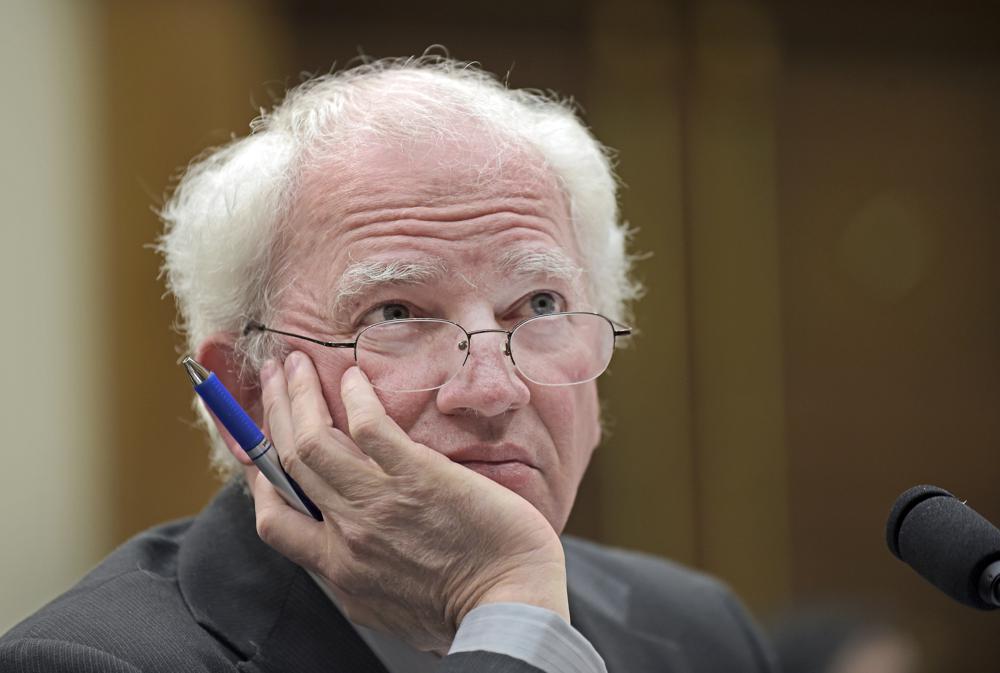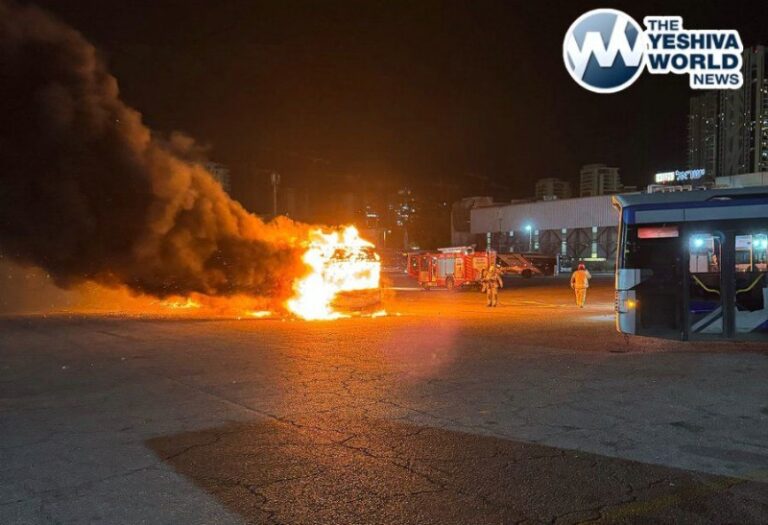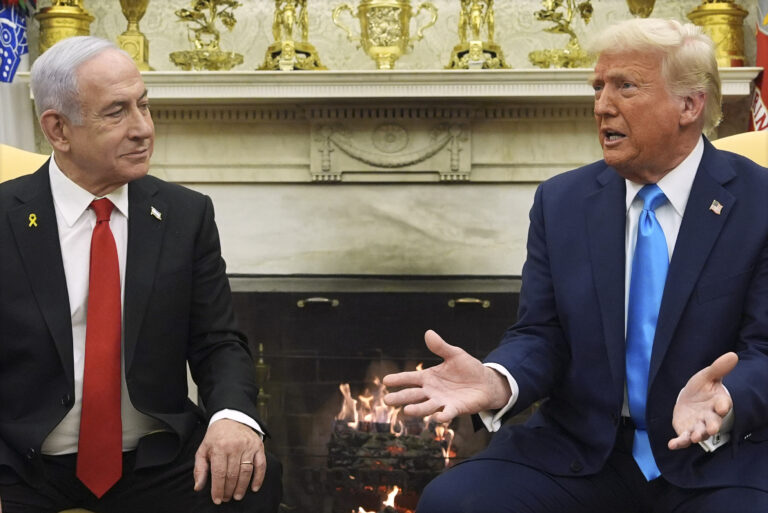The House committee investigating the Capitol riot plans to focus its hearing Thursday on the pressure that Donald Trump put on his vice president, Mike Pence, in a last-ditch and potentially illegal plan to stop Joe Biden’s election victory.
Trump seized on the unorthodox proposal from conservative law professor John Eastman to have Pence turn back the electors when the vice president presided over Congress to certify the election results on Jan. 6, 2021.
Traditionally, Jan. 6 is a ceremonial day, a procedural step tallying the presidential vote. But Eastman’s highly unusual plan — “bold,” he called it — was to have alternative slates of electors submitted to Congress, leaving Pence no choice but to return them to the states to sort it out. Biden would be denied a majority and Trump could win.
As the defeated Trump watched dozens of court cases challenging the 2020 presidential election collapse, he turned to the Eastman plan as a last resort to stay in office.
“John (Eastman) is one of the most brilliant lawyers in the country and he looked at this,” Trump told thousands of supporters at a rally near the White House before sending them to the Capitol on Jan. 6.
“And he looked at Mike Pence, and I hope Mike is going to do the right thing. I hope so. I hope so because if Mike Pence does the right thing, we win the election,” the then-president said.
The committee viewed it as a “grave, grave threat to democracy” according to a committee aide who was granted anonymity to discuss the matter before Thursday’s hearing.
A look at the Eastman plan in the days before Jan. 6 and why it’s central to the congressional investigation:
THE PLAN
Two days before the Capitol attack, Pence was summoned to the White House for an Oval Office meeting with Trump and Eastman to hear about the law professor’s plan to turn back the electors.
With Trump’s false claims of election fraud, Eastman had been circulating what was essentially an academic proposal challenging the workings of the 130-year-old Electoral Count Act that governs the process for tallying the election results in Congress.
The six-point plan was gaining momentum among Trump’s allies in Congress, including key senators, and outside activists.
“BOLD, Certainly,” Eastman said in a memo included in a court filing from the Jan. 6 committee. But he said such an unusual step was needed, falsely claiming “this Election was Stolen.”
If Pence would refuse to count some electors, then the threshold needed to certify the presidential election would drop from the regular 270-vote majority to a lesser number — one presumably that Trump could reach.
If Democrats in Congress objected, as Eastman predicted they would, then under current law the House would be called on to decide the presidency. In that scenario, because the House would vote by individual state congressional delegations, which were mostly Republican majority, the numbers would align for Trump to win.
“The illegality of the plan,” declared the Jan. 6 committee in a court filing, “was obvious.”
HOW COULD THAT EVEN WORK?
To set the plan in motion, Trump and Eastman convened hundreds of electors on a call on Jan. 2, 2021, encouraging them to send alternative electors from their states where Trump’s team was claiming fraud.
Arizona, Georgia, Michigan, Pennsylvania and Wisconsin, and maybe even Nevada and New Mexico were on the list, according to testimony provided to the committee by Greg Jacob, who was counsel to Pence.
Jacob, who is scheduled to testify Thursday before the House committee, was at the Oval Office meeting with Trump and Pence when Eastman outlined the plan on Jan. 4. Jacob received an email from Eastman late the following night.
“Major new development,” Eastman wrote, attaching a letter signed by several members of the Pennsylvania legislature.
“It now looks like PA Legislature will vote to recertify its electors if Vice President Pence implements the plan we discussed.”
Jacob responded in lawyerly prose, asking if it is “not unconstitutional.”
HAD THIS EVER BEEN DONE BEFORE?
While the every-four-year-ritual of certifying the election results has certainly come with objections, nothing of this magnitude had been proposed since the disputed election of 1876 that led Congress to pass the Electoral Count Act.
Routinely, lawmakers from the losing side of a presidential election would wage protest votes during the ceremonial proceedings in Congress. Several Democrats, including then-Sen. Barbara Boxer of California and Rep. Bennie Thompson of Mississippi, chairman of the Jan. 6 committee, joined a challenge to Ohio’s electors after the 2004 election.
But no defeated president had ever done what Trump did, mounting a wide-ranging campaign to overturn an election that included pressure on the vice president to change the outcome.
When Eastman received Jacob’s probing questions, he retorted that the counsel was being “small-minded.”
The professor pointed to past instances in history when presidents essentially violated the letter of the law for a greater outcome, and he suggested such an action was warranted now because the “Constitution was being shredded” over the election.
Jacob replied that he could not believe there was a single Supreme Court justice or any judge who would agree to toss election laws “that have been followed without exception for more than 130 years.”
Eastman’s theory, Jacob wrote, was “essentially entirely made up.”
PRESSURE BUILDS, TRUMP CALLS PENCE
Pence’s instinct was there was no way the Founding Fathers would entrust a single person with this authority to determine an election, Jacobs testified.
Pence had asked questions of Eastman during the meeting, but “never once did I see him budge from that view,” he said.
But a day after the Oval Office meeting, the pressure intensified. Rather than just turn the electors back to the states, Eastman said Pence should just throw out the states’ tallies outright.
“What I’m here to ask you to do is to reject the electors” Eastman said on Jan. 5, according to Jacob’s testimony.
On the morning of Jan. 6, as the vice president prepared to head to the Capitol to preside over the vote, Trump called.
Trump told Pence he didn’t think he had the courage to make a hard decision, according to testimony to the Jan. 6 committee by retired Gen. Keith Kellogg, a national security aide who was with Trump at the time and heard part of the conversation.
“You’re not tough enough to make the call,” Trump said to Pence.
THE COUNT BEGINS
The first objection during the joint session of Congress was raised by a Republican congressman from the Arizona, one of the states Trump most vehemently disputed was won by Biden.
Congress began working its way through the procedural matter; rioters were closing in on the Capitol.
In an email to Eastman after the attack began, Jacob closed his arguments against the plan, saying: “And thanks to your bullshit we are now under siege.”
At the time, Jacob was sheltering in the Capitol from the mob.
WHO IS JOHN EASTMAN?
A former Chapman University law professor, Eastman is known in conservative circles for having clerked for Justice Clarence Thomas on the Supreme Court.
Eastman also clerked for retired Judge Michael Luttig, who is also scheduled to testify Thursday. Luttig has called Eastman’s ideas “incorrect at every turn” and had been providing legal counsel to Pence’s team before Jan. 6.
Ahead of Thursday’s hearing, the vice chair of the House committee, Rep. Liz Cheney, R-Wyo., released a video offering a glimpse of what’s to come.
In the video, Eric Herschmann, a lawyer at the White House, recounts a final conversation he had with Eastman the day after Jan. 6.
“I’m going to give you the best free legal advice you’re ever getting in your life — get a great effing criminal defense lawyer. You’re going to need it,” Herschmann recalled, saying. “And then I hung up on him.”
Eastman repeatedly invoked his Fifth Amendment rights not to testify during his interview with the committee.
(AP)












3 Responses
The immoral, treasonous, lying adulterer and his henchmen make Nixon look like a boy Scout.
At least twice (1876 and 1960) there is strong historical evidence of election fraud affecting the presidential election. In both situations, a candidate who did not win a plurality of the state’s votes was certified, and as a result won the election? What would happen then?
In recent past elections, exit polls “leaned” towards the Democrats, yet in 2020 they suggested Trump won several states that were awarded to Biden. And in the past, mail in ballots did yield significantly different results that in person ballots. These two factors would have been “smoke” to suggest there was a fire (miscounting of votes, perhaps deliberately). So if Trump genuinely believed the election was stolen (i.e. ignoring that voting by absentee ballot, which also excluded you from exit polls, correlated with party since Democrats tended to be more paranoid about Covid-19 than Republicans, and more likely to vote by absentee ballot), what should Trump have done?
In theory, states could skip the election have have the legislature pick the electors (as was done in the late 18th century), but this is simply not done (it would be similar to, in Britain, the Queen appointing herself Prime Minister and running the country without consulting Parliament, which she is legally allowed to do, but only in theory).
It also should be noted that voters tended to support Republicans other than Trump (something both Trump and Democrats prefer to ignore, since it makes both of them look poorly), which in itself suggests there was no fraud since ballot box stuffers never split their ticket.
The lying and propagandizing AP is up to its usual “editorializing” and propagandizing instead of reporting.
President Trump’s claims were not adjudicated in court; they were dismissed without hearing them.
Therefore, those claims are not “false”; they have simply not been addressed.
The sheker runs much deeper, but that’s enough here.